It may be sacrilege to say so, but on a purely aesthetic basis I think I preferred Rocamadour to Mont St. Michel. True, it does hit that awkward middle ground in which a place is still a fairly large tourist attraction—its main street full of shops hawking hippified "medieval" garments, sunglasses, and cheap China-made figurines of fairies—yet doesn't have the same level of fancy-pants infrastructure that an even more popular location might. And perhaps its setting—perched on the side of a valley cliff as if chiseled straight out of the rock—is not quite as unusual as the tidal island that houses its more famous cousin. Yet there was a magic to strolling around the walled medieval city at nightfall, when all the tourist buses had departed and we had the whole place to ourselves, that I had hoped to find at the Mount and simply did not due to the massive numbers of people there, even at off hours.
The appreciation of Mont St. Michel that I ended up with is largely intellectual, based on interesting facts I learned from the tour of the abbey, and concerted efforts of imagination while wandering the city that were, occasionally, successful. My appreciation of Rocamadour was much more instinctual and imaginative, since we didn't go on any guided tours and indeed drove to more secluded parts of the valley during the most crowded times of day. But after hours, at twilight, it was simultaneously peaceful and intriguing to roam the labyrinth of fortress and chapels, imagining the lives that have been lived on this spot. Even during the day there are pockets of quiet here, such as the prayer service we slipped into and sat, listening to the call and response of the priest and nuns. (Ironically, I'm sure neither location was all that quiet or contemplative back in its heyday, with all the pilgrim traffic, horses and donkeys sheltering in churches and tradespeople trying to make money off the pilgrims. Still, no matter how hard I try, bus-loads of modern-day tourists will never be evocative for me of anything remotely positive.)
Rocamadour (the "rock of St. Amadour") was a big pilgrimage site on the route to Santiago de Compostela during the Middle Ages, at least in part because of the Black Madonna still housed in one of the chapels here. In a show of commitment I'm unlikely to repeat, pilgrims climbed the twisting flights of wide, worn stone steps that lead from the main street up to the complex of churches on their knees as a show of repentance. By the time we meandered back down those same stairs the night of our arrival, no one was in evidence except a single gray cat, who showed no signs of repentance at all.
In the heart of the town, the buildings seem to grow directly out of the rock. Even the black shadow of a window-opening contrasted with its sandy sill, is echoed by the colors in the black-and-sandy rocks themselves. Whether it's an effect of the mineral content or the discoloration of years of human use, or some combination of the two, the end result is striking: a blurred boundary between the naturally-occurring and the man-made.
In an interesting parallel with some of our earlier adventures, Blanche of Castille (commissioner of much of the current Château d'Angers, which we visited last week) made a pilgrimage here in the early 1200s. It's always encouraging to start to recognize names and dates you've seen before, to start to build a context for a previously-unfamiliar historical period. Medieval France certainly seems closer to me now, easier to imagine and relate to, than before I visited these places. And when I see another mention of Blanche's name, I will have these two sets of memories with which to connect her. (Those, and the memory of David putting on a New Jersey accent and exclaiming, at Angers, "Awh Blanche, ya made such a nice house!")
Outside of the medieval heart of the town, the construction is largely 19th-century or later; apparently the town was almost in ruins after the decline in pilgrimages following the wars of religion and the revolution, and only became fashionable again in the 1800s. This leads to an interesting amalgam of styles, such as the 1887 Stations of the Cross that lead up the steep slope to the medieval château (really more of a fortress) that was built to protect the town and churches. The juxtaposition is slightly jarring but also interesting, like historical fiction written by an author who is herself long-dead.
Roaming around the twilit and illuminated medieval city wasn't the only thing we did over the past few days, although we're definitely slowing down as we near the end of our trip. We took a drive through the beautiful countryside, and stopped in at a working farm recommended by Marie Christine, which produces fresh goat's milk cheese and yogurt, and sells other regional specialties, including wine and pork saucissions. We visited with the goats, who seemed contented and healthy if a bit cantankerous in that typically goaty way, and then bought some picnic supplies made with their milk. On the way out we saw a horde of chicks being spirited away by their mother hen.
This morning we left Rocamadour for La Bourboule, our base camp for a longish hike we're doing tomorrow. Well, the hike is longish by American standards (about 12 miles). It's not long at all by French standards, as it will only last one day and not involve any camping or even staying overnight at an inn different from the one where we began. But you do what you can. People here are serious about their hiking, and perhaps I should call what we're doing a "day walk" or even a "light stroll." In any case, La Bourboule is a lovely, sleepy little town, and hopefully I'll have more to post about it tomorrow or the next day. Until then I'll leave you with a final shot of Rocamadour at night, taken from the steps of our hotel.
Only a few more days and we'll be back home!
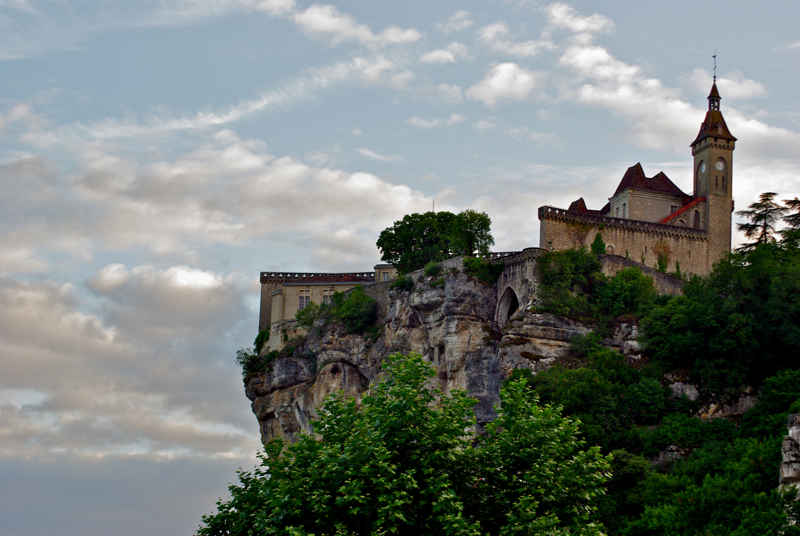
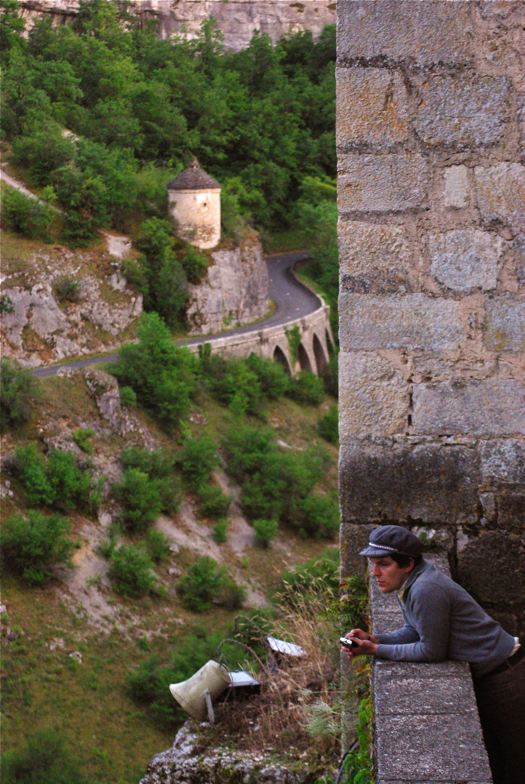
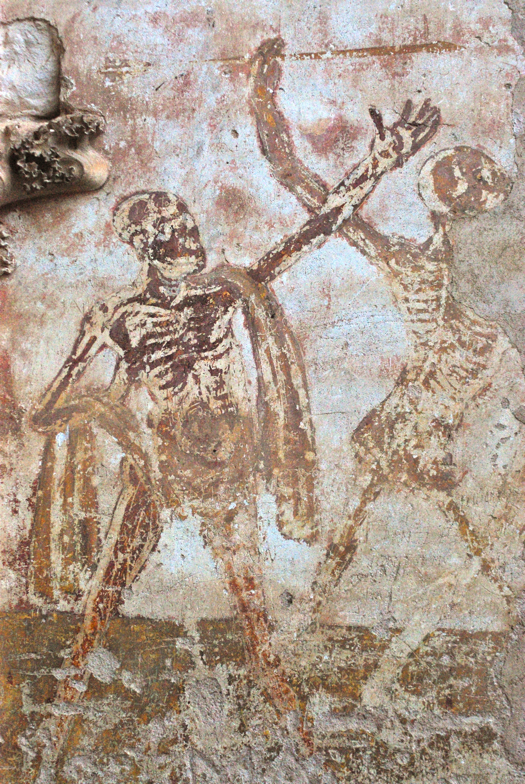
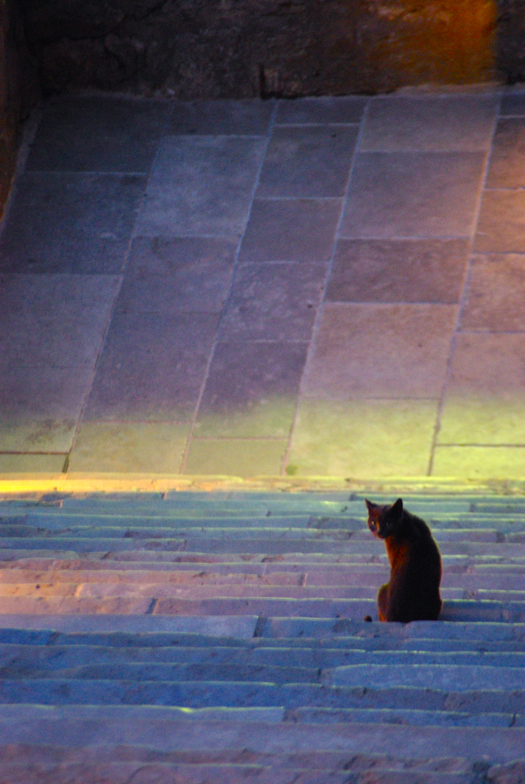
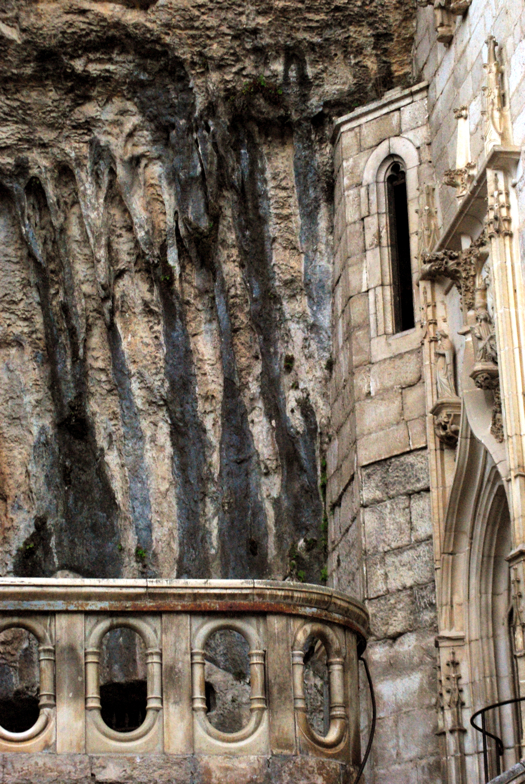
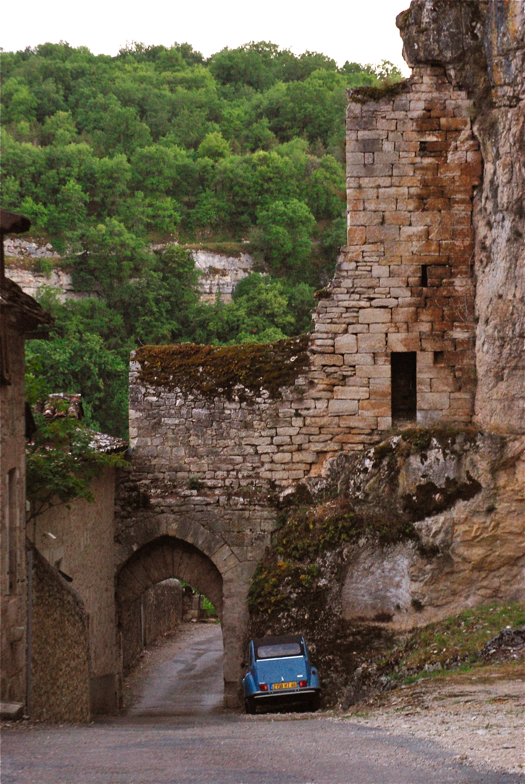
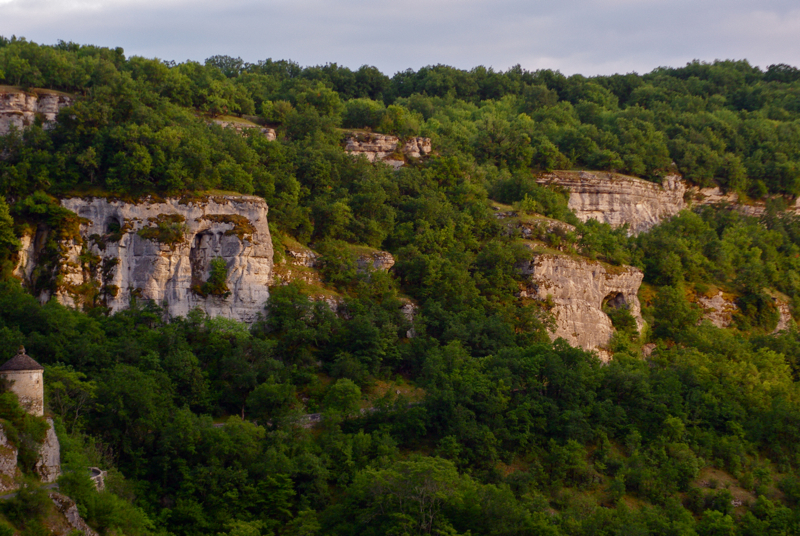
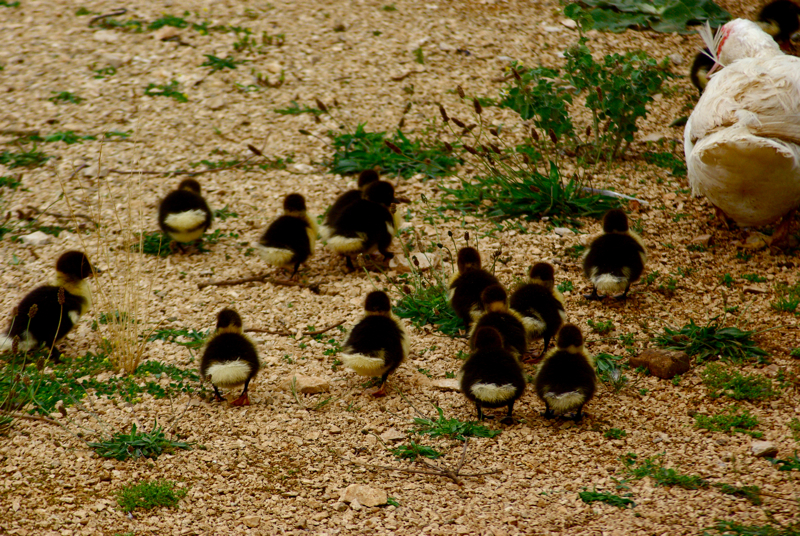
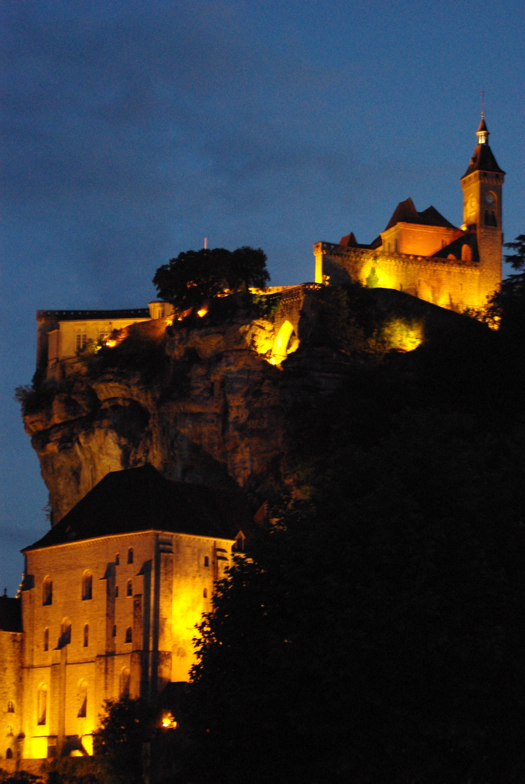


wonderful pictures!
(hi, i am a lurker. my name is kim and i'm from the netherlands. your blog is lovely.)
Hi Kim, thanks for stopping by & commenting. :-) Glad you're enjoying the photos.
Dear Emily,
I am enjoying your travelogue! You have an artist's eye! I especially like the photo of David, in his Kenneth McNeil sweater, & the winding road - the road less traveled? - in the distance.
Happy Birthday, too.
Sue
Thanks, Suzanne, two times over. :-) I really like that shot of David too.
This is one of my favorite batches of your France photos - each one is such an amazing shot. I love the skeletons - and the cat on the rainbow stairs. Really lovely pictures. :)
Thanks, Sarah - the skeletons are a favorite of mine too. They were one of the things that made me wish we did have some kind of guide or audiobook - what's the story there? Still, they were beautiful and atmospheric.
I'm just catching up on your French trip and am loving all your beautiful photos together with the literary slant of your journey. I love Paris but would also love to go to Mont St. Michel and it looks like Rocamadour is a must too!
So glad you're enjoying the France posts, Sakura. All three of those locations were pretty magical in their own ways. I think by this point in the trip I was just really ready for the relative peace & quiet of Rocamadour. :-)
That first picture is absolutely striking. And I love how you described the town: Whether it's an effect of the mineral content or the discoloration of years of human use, or some combination of the two, the end result is striking: a blurred boundary between the naturally-occurring and the man-made.
Thanks, lady! That first shot is a result of me being jealous of David's HD setting on his iphone, and trying to replicate the effect in iphoto. ;-) I.e., it did not come out of the camera like that. Still, starting with such a dramatic setting helped.
I can see why you fell in love with Rocamadour, there is something rather magical about it.
There is indeed. The ability to wander in a place and not feel crowded is key to my ability to experience its magic, I think.